Over time, buildings often stray from their original programs and develop lives of their own. It is only natural, that garage conversions abound in areas where real estate is expensive. Plus, reuse, preservation, and renovation of the existing building instead of demolition and rebuilding a new house seems to be the most sustainable approach to architecture.
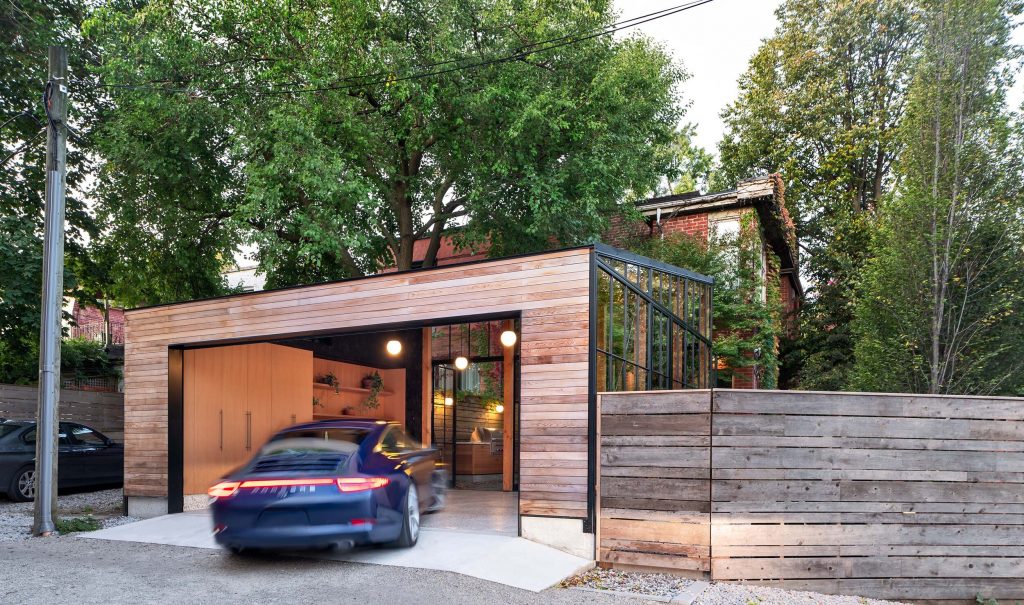
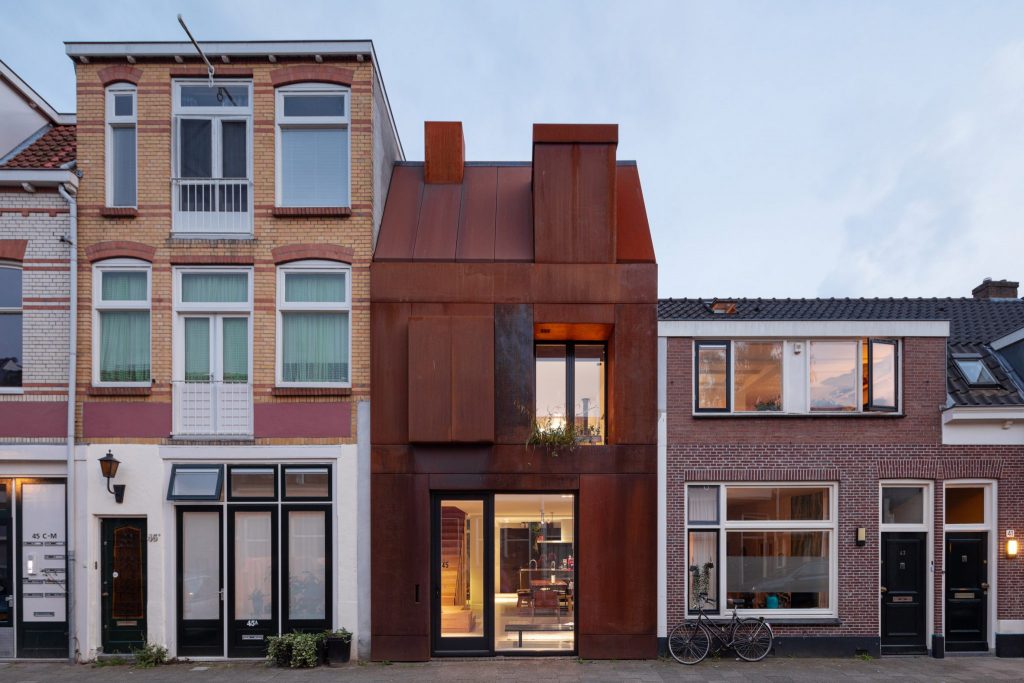
Steel Craft House by Zecc
Dutch studio Zecc Architecten has converted an old working-class house in Utrecht that had previously been used as a storage space, an improvised stable for a greengrocer and finally a garage, into a home for a steel artist aptly named Steel Craft House. The studio kept the existing ground-floor structure, as well as the garage door and the brick walls, topped it with a two-storey timber construction and clad the façade of all three floors, the chimney and the roof dormer in Corten steel.
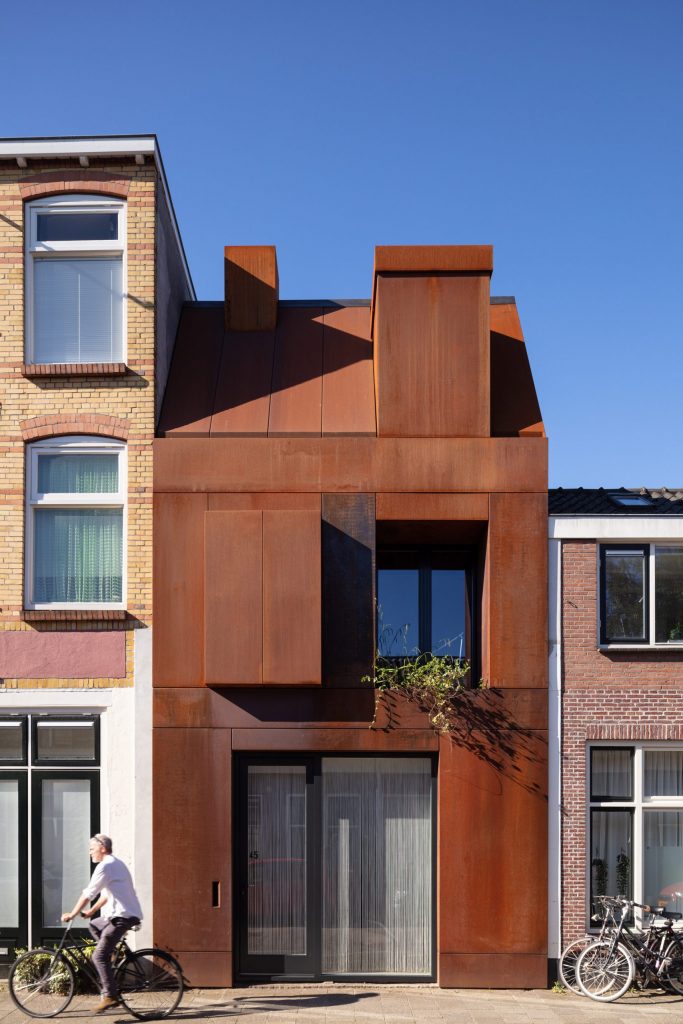
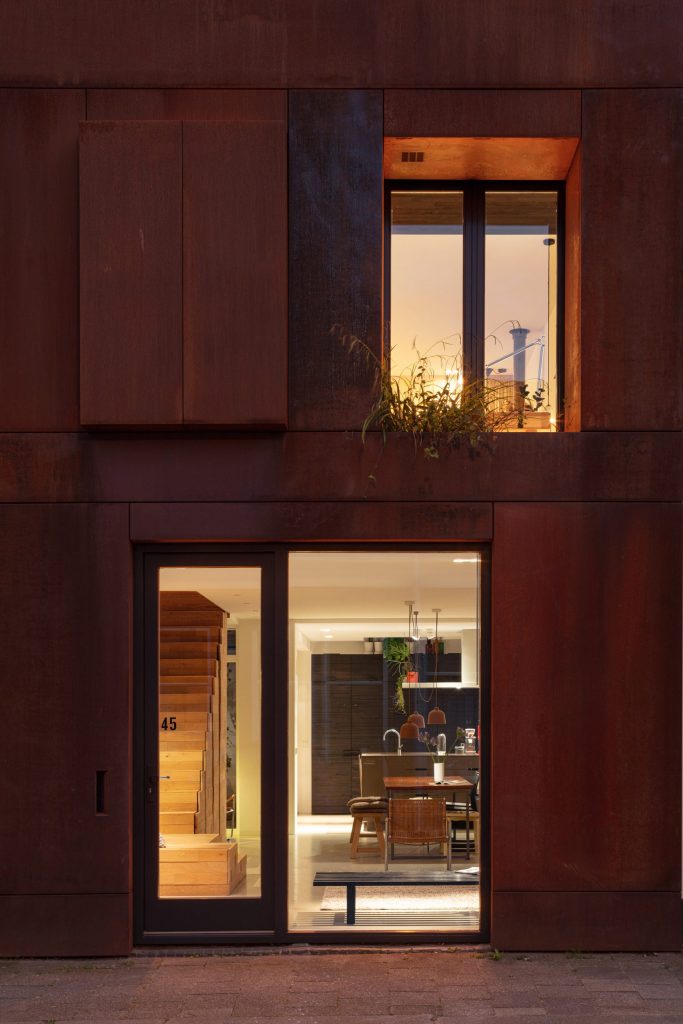
Steel Craft House by ZeccWhile timber was chosen because of its durability and light weight, the choice of the weathering steel was made out because of its long service life. Its dense corrosion layer stops further rusting, with no need for additional paint or coating. At first glance, the material contrasts with the neighbouring brick buildings, but at the same time, it is beautifully in keeping with them because the discolouration of the Corten steel and its rust-coloured hue refer to the patina of the archetypical Dutch brick. Features like the characteristic façade layout, the roof cowl with dormer, and a chimney were translated in the steel cladding.
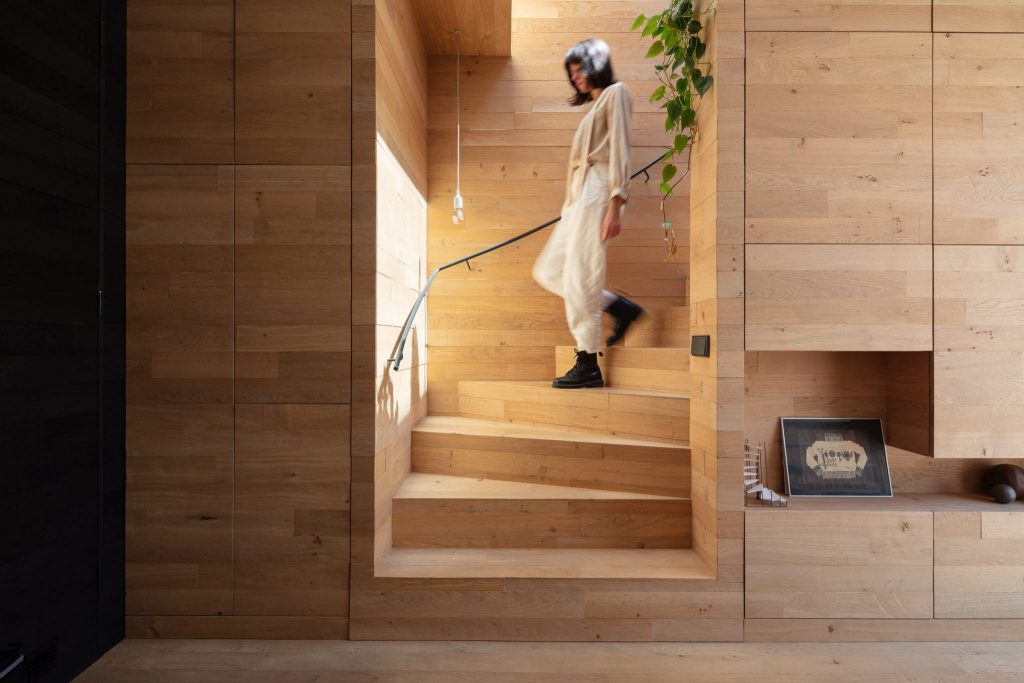
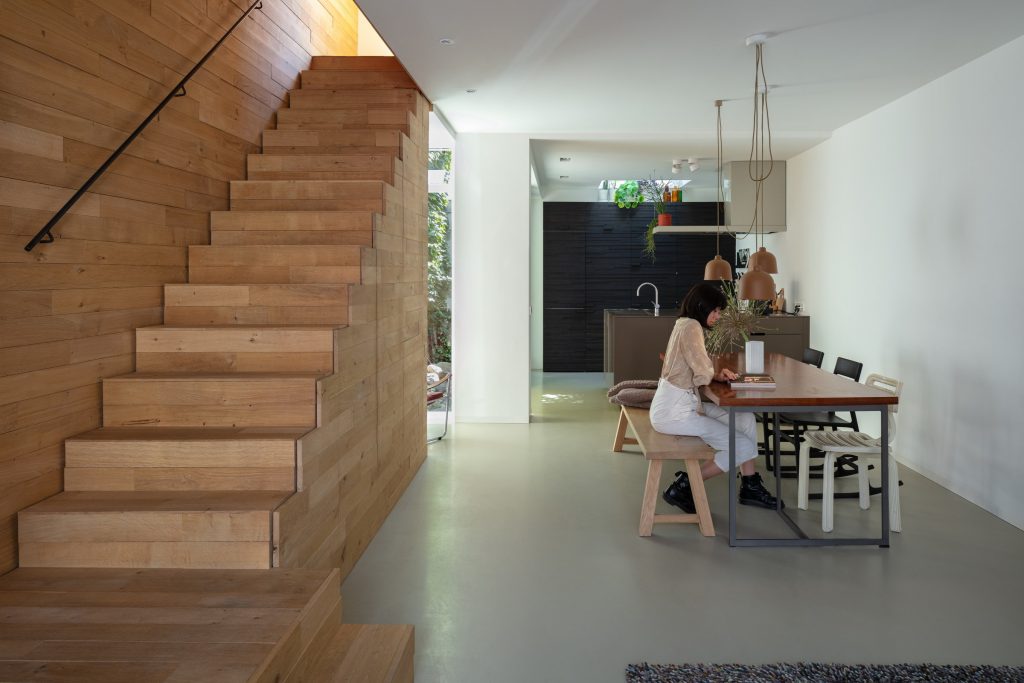
Steel Craft House by Zecc
Behind the hard, somewhat closed steel façade, hides a soft and light residence. Extra daylight enters via a large sliding door opening to the patio, large tri-fold glass doors opening to the terrace and several skylights. For instance, the dormer was equipped with a light dome, and in the bathroom the light enters via a small air gap in the ‘bay window’ of the front façade. In consonance with the surrounding houses the original recessed frame for the façade was retained, but a glass door was installed for the entrance.
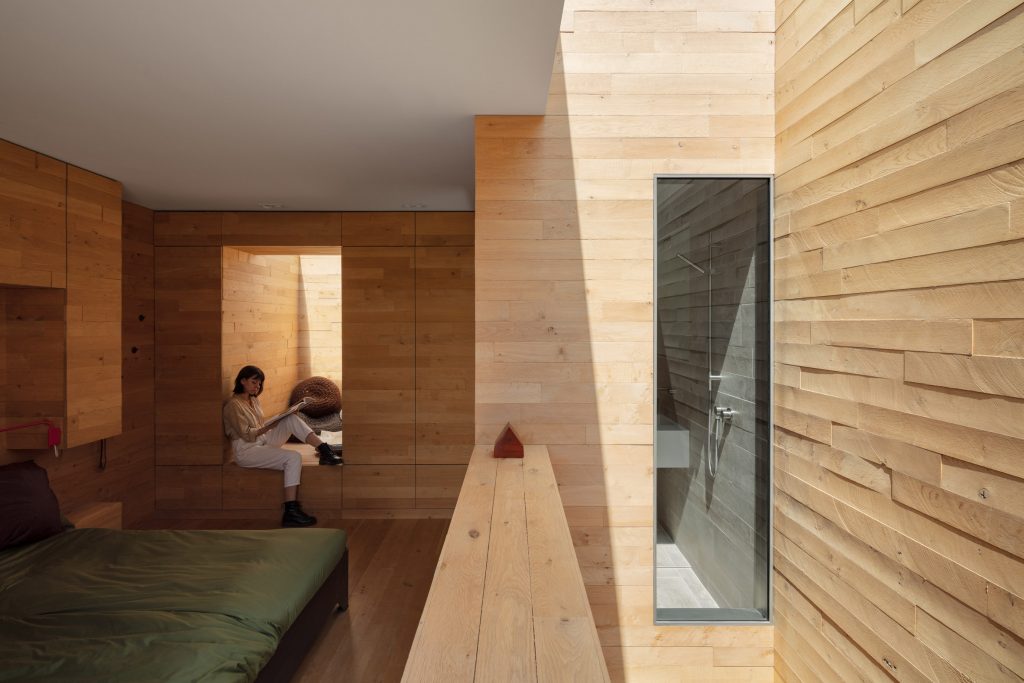
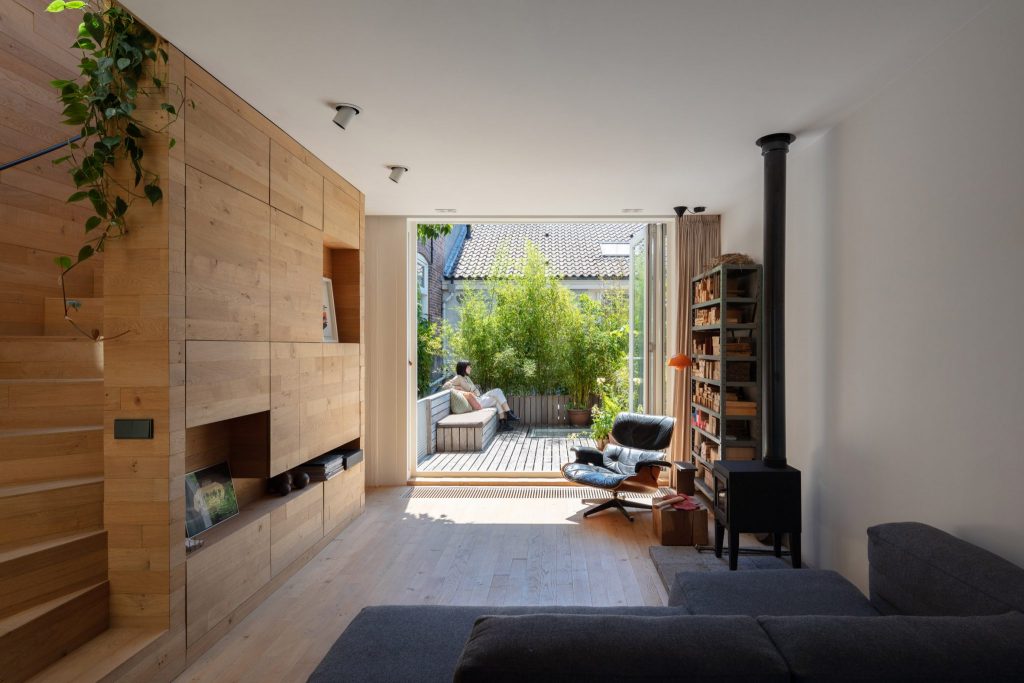
Steel Craft House by Zecc
The harmonious interior is formed by a sculptural piece of ‘furniture’ in oak designed by the owner over three building layers. To maximize the use of the limited space, several functions are combined in this piece. The stairs contain a shelving system, storage space and the base steps double as seating furniture.
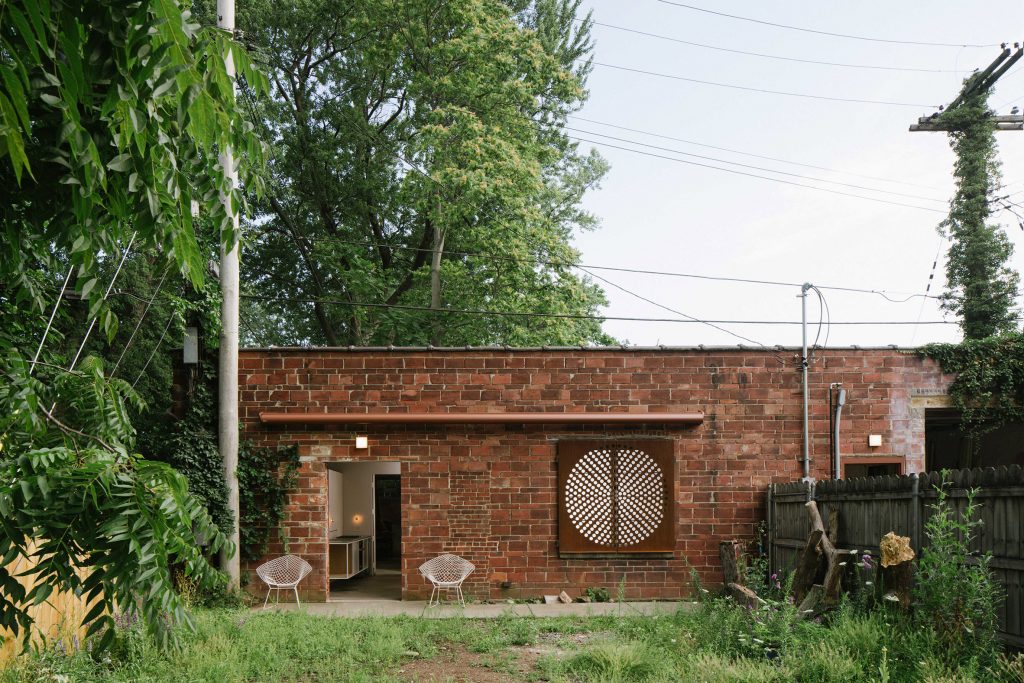
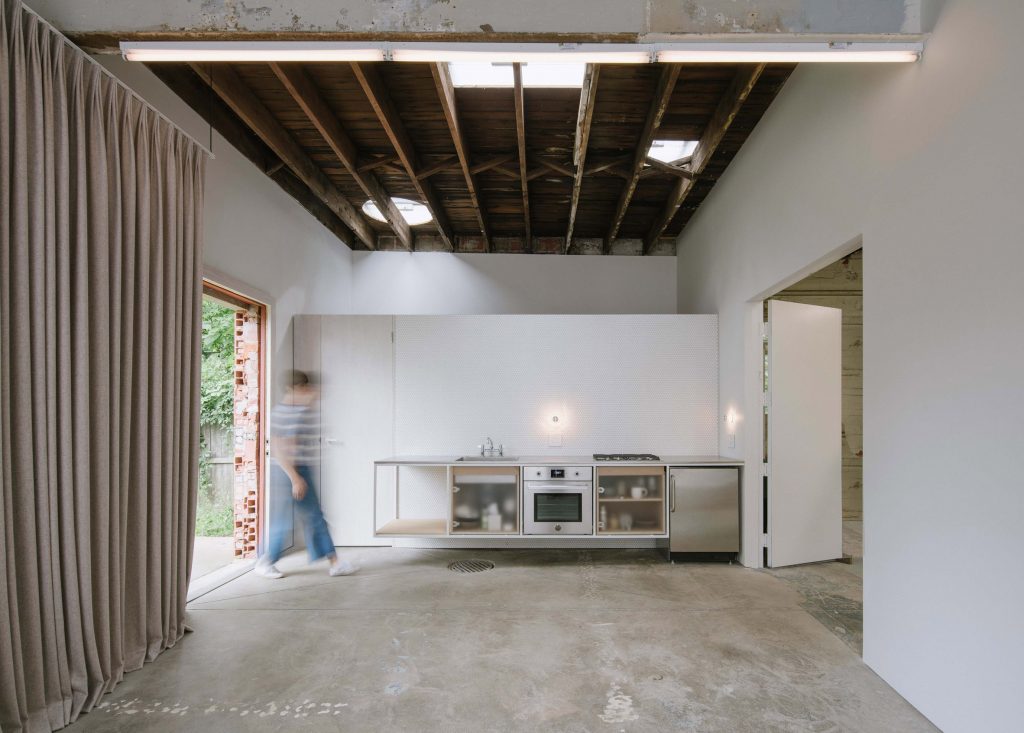
Big Space, Little Space by Davidson Rafailidis
Big Space, Little Space project by US design studio Davidson Rafailidis, founded by local designers Stephanie Davidson and Georg Rafailidi, is an adaptive re-use of a masonry garage built in the 1920s transformed into an apartment dwelling and workshop, tucked away in the middle of a residential block in Buffalo, New York.
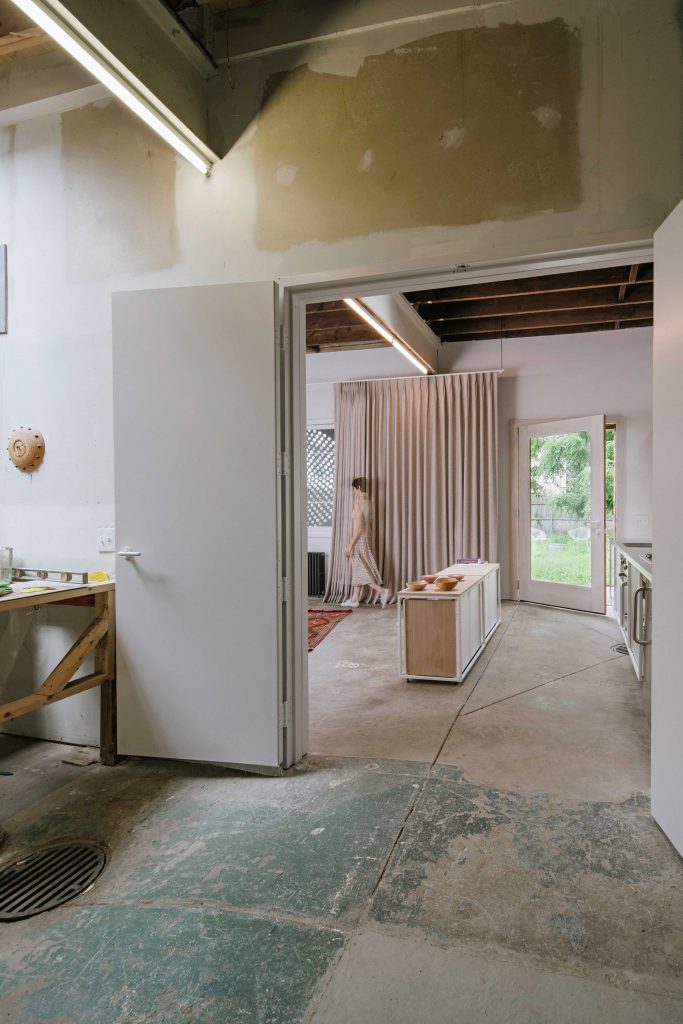
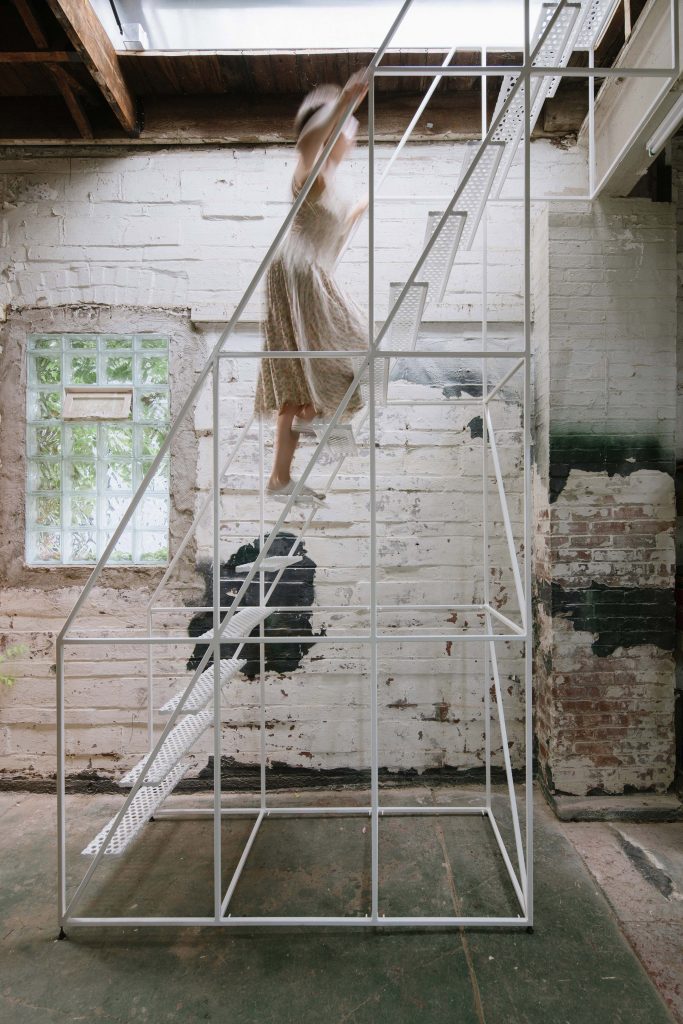
Big Space, Little Space by Davidson Rafailidis
The name of the project comes from the original floorplan of the garage, which has been previously partitioned to create a small office for a general contractor. This smaller area was converted by the studio into an open-plan 43sqm residence adjoining the garden at the front, while the workshop spans the remaining larger space of 480sqm at the rear. According to the architects, the spaces are rather offerings for temporary and informal uses, which can trigger unexpected uses are on offer. While the occupants can enjoy the kitchen, living, dining and bedroom accommodated in the smaller space during cold months, in the summer the living space can be extended into the workshop.
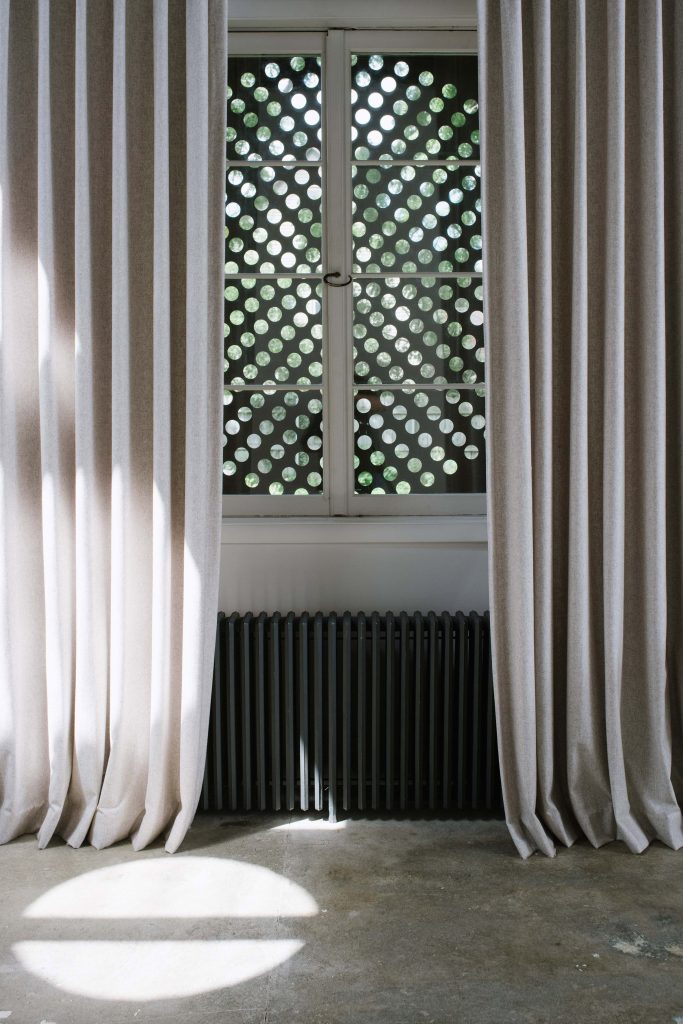
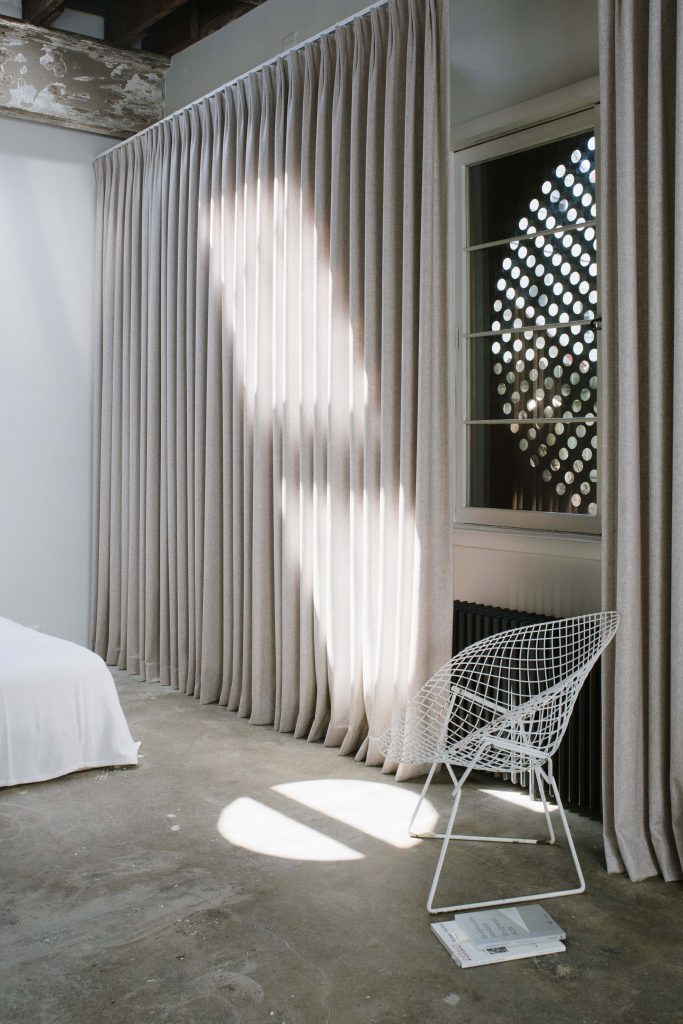
Big Space, Little Space by Davidson Rafailidis
The main difference between the two areas is that the walls of the smaller space are insulated, plastered and freshened up with white paint, while the workshop has retained exposed brickwork walls, peeling paintwork, uneven concrete flooring and rough wooden beams. This, together with nondescript white oak cabinetry, creates a feeling of an open, transient and generous space.
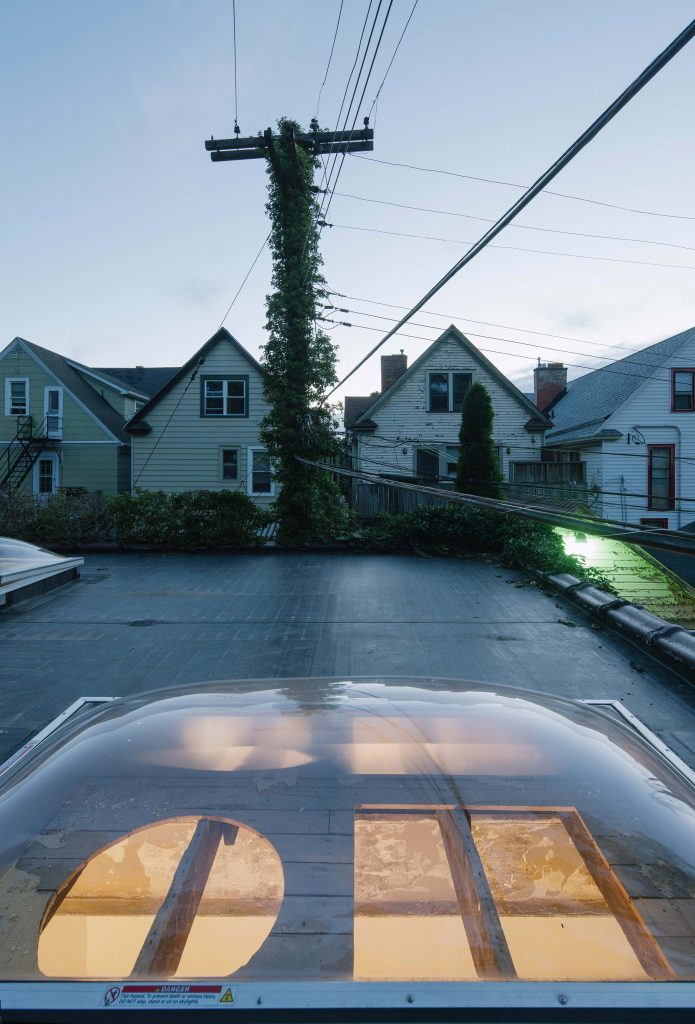
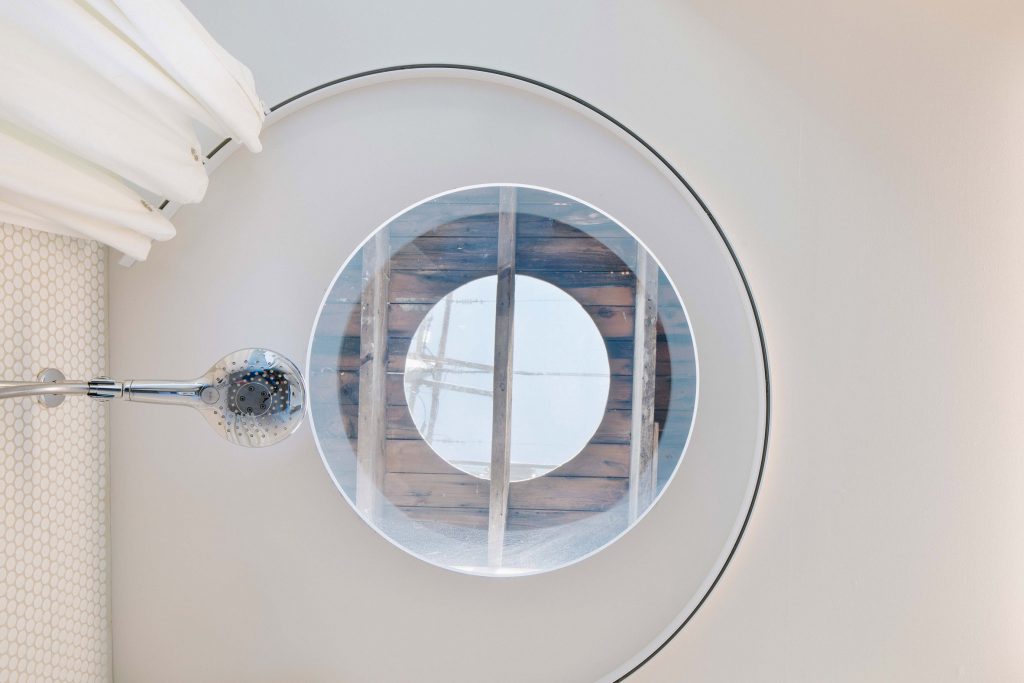
Big Space, Little Space by Davidson Rafailidis
As regulations in the surrounding historic area limited the changes that could be made to the exterior, the studio added 10 curved skylights to bring natural light and ventilation into the home. Minimal alterations made to the exterior involved increasing the width of the front door, and adding an awning to shade a patio at the front. Windows are covered with Corten steel shutters that match the tone of the clay tiles. These offer privacy to the residents, while circular perforations allowing light to filter through.
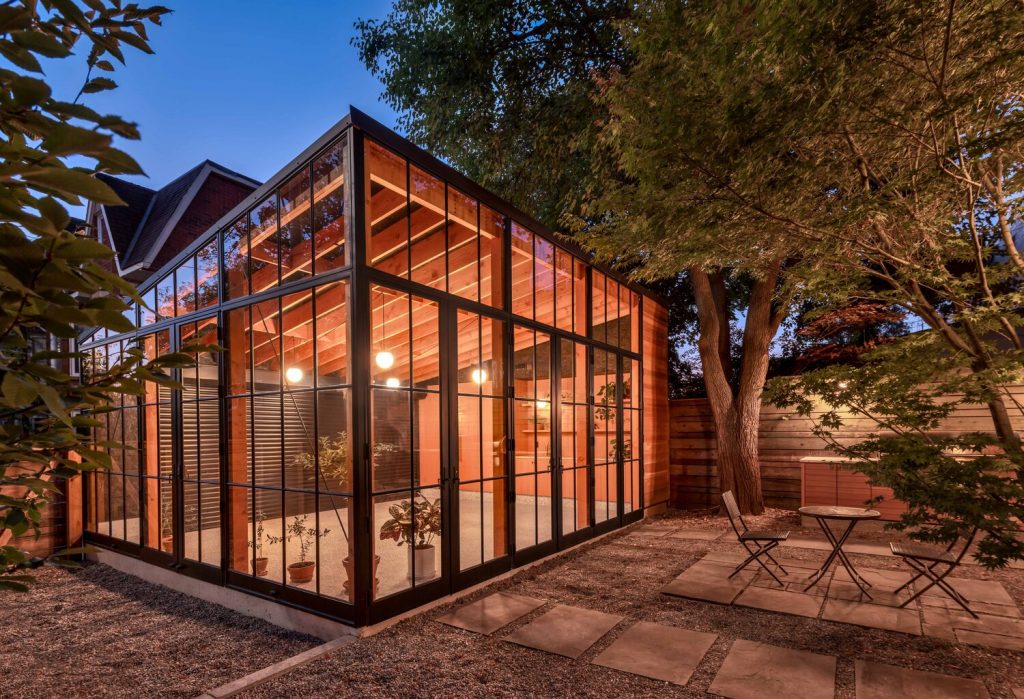
The Garage Gem by Office Ou (also header image)
Canadian architecture studio Office Ou has transformed imagined a detached laneway garage in Toronto into a true extension of the home. The Garage Gem is a flexible multifunctional space offering a wide range of uses: it is a functioning garage, occasional workshop, a three-season space for entertaining guests, dining, writing, and simply enjoying the quiet seclusion of the leafy rear yard.
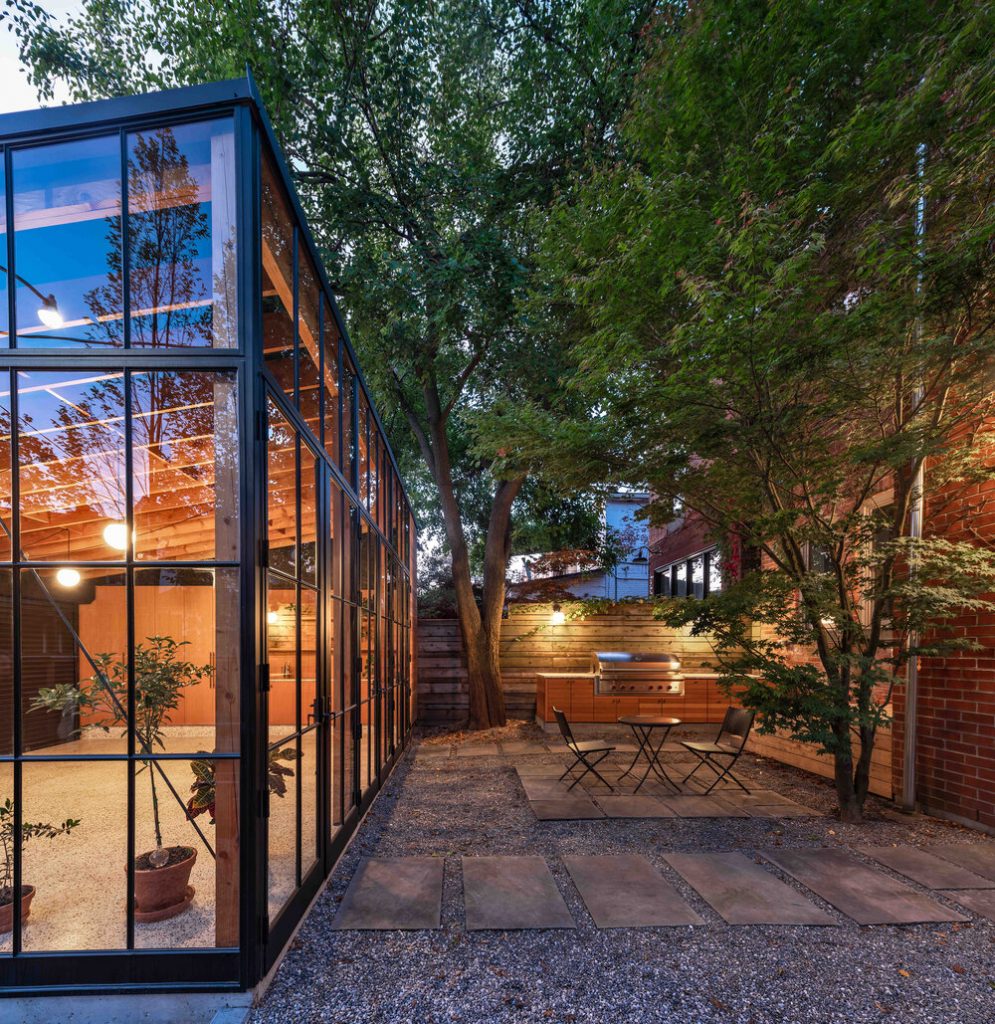
The Garage Gem by Office Ou
The architects have surrounded it with glass doors and doors fronted by black steel mullions, and clad the front façade with cedar wood that aging over time will weather and blend with the colour of the grey fence that edges the property.
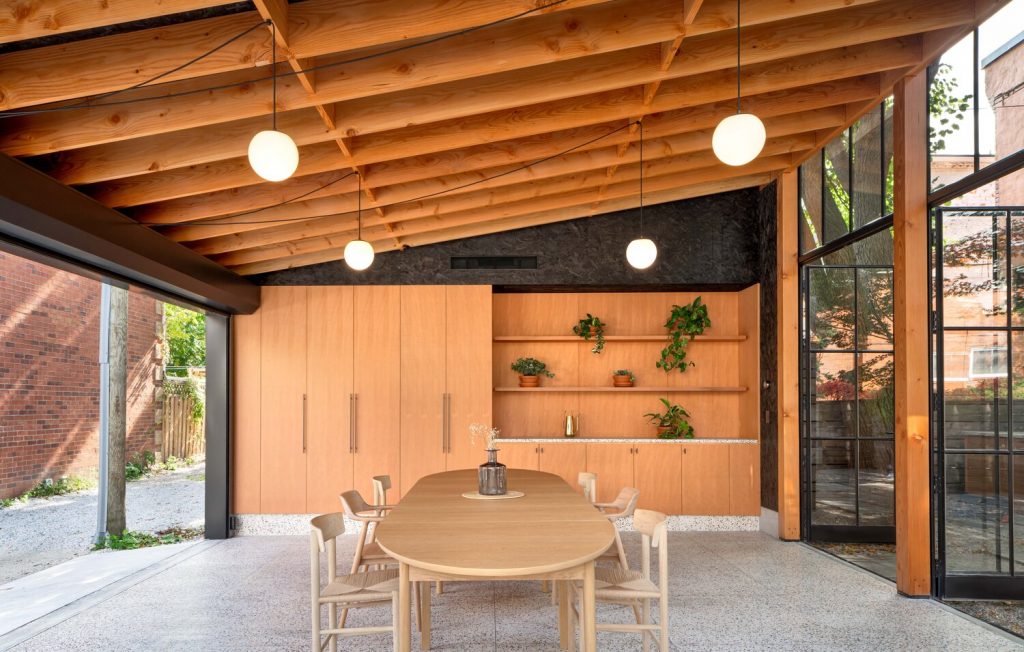
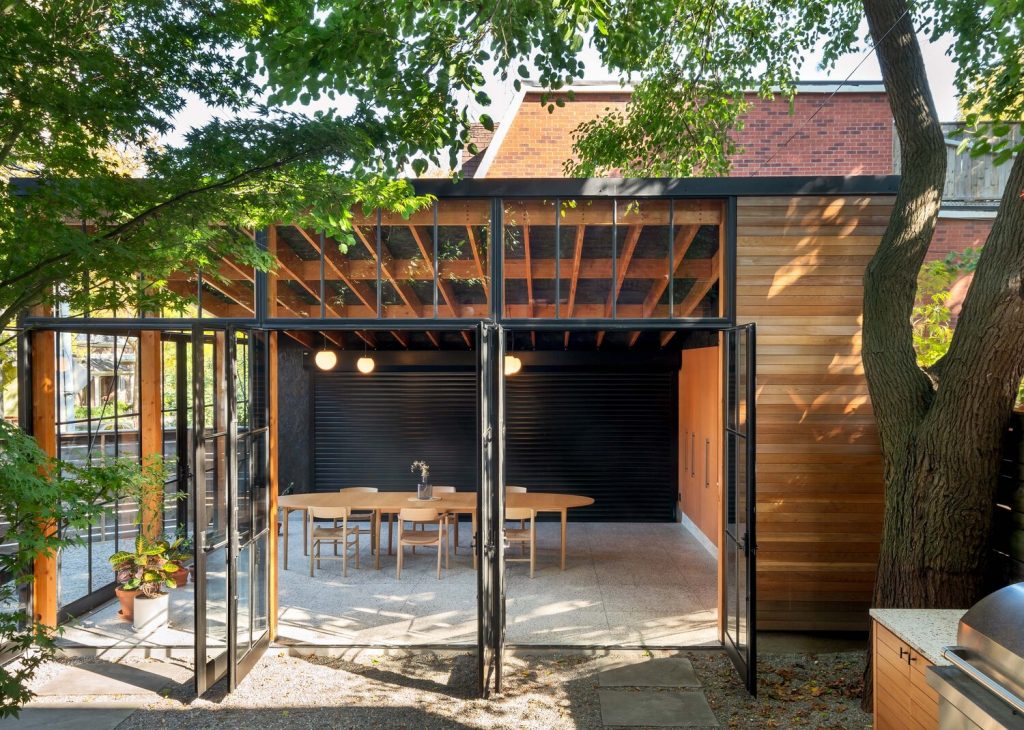
The Garage Gem by Office Ou
The interior features hardwearing terrazzo floors and countertops, an exposed douglas-fir structure, black-stained OSB sheathing, and meticulously detailed steel-framed windows and doors.
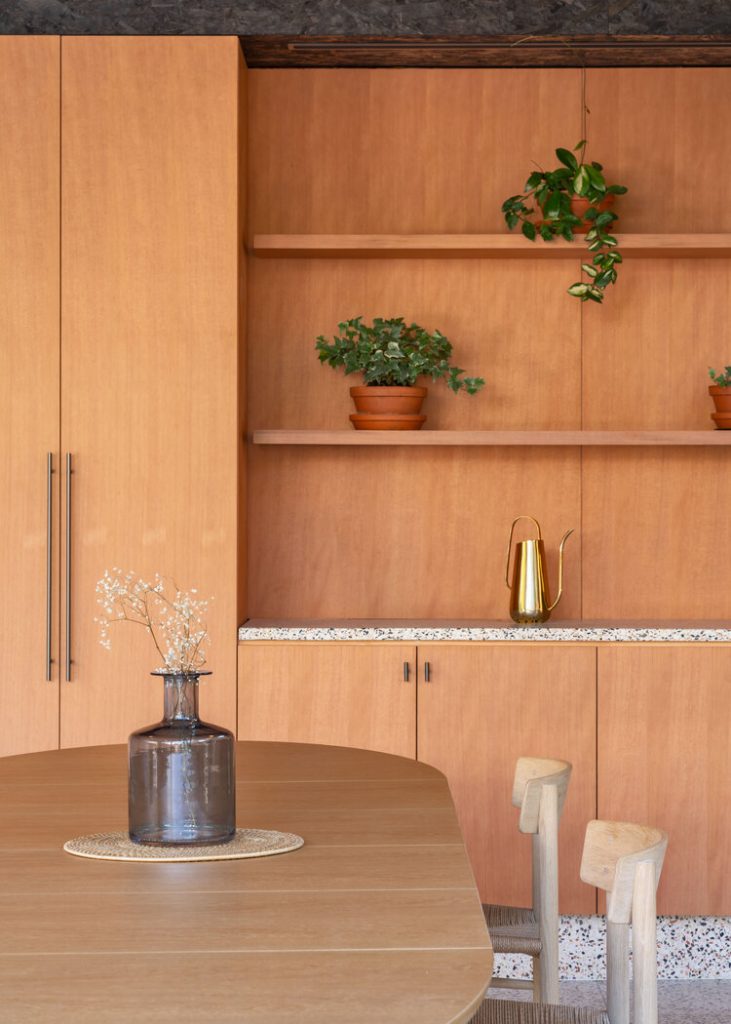
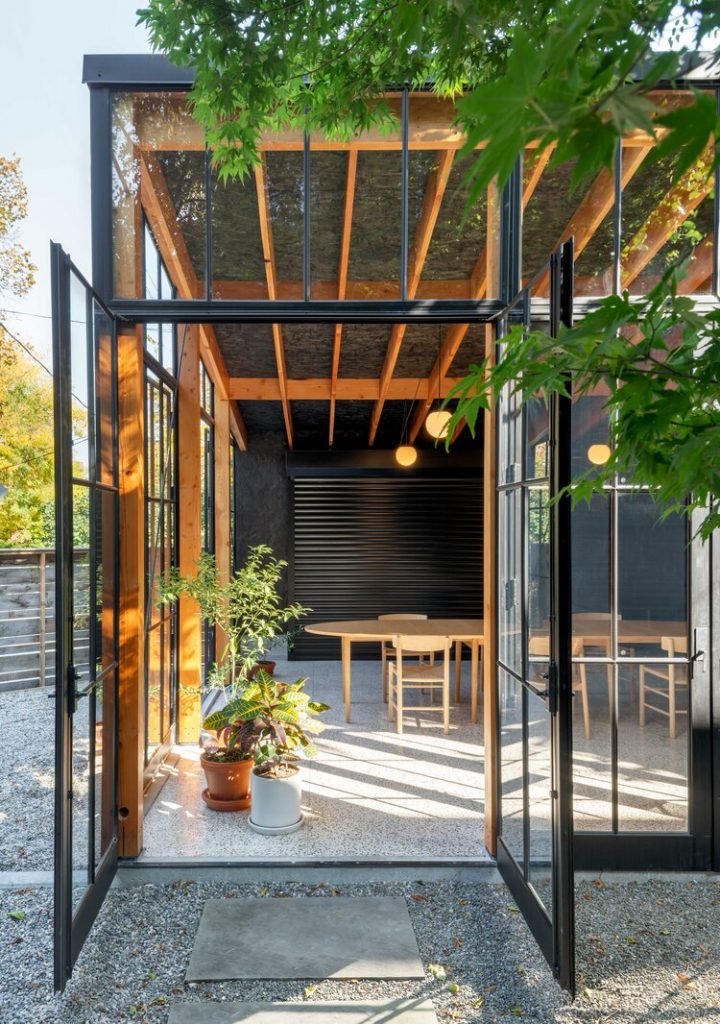
The Garage Gem by Office Ou
In the yard between garage and house, a new outdoor kitchen repeats the theme of cedar and terrazzo, and custom designed globe lights with swooping wires hanging from the ceiling beams tie the entire space together.